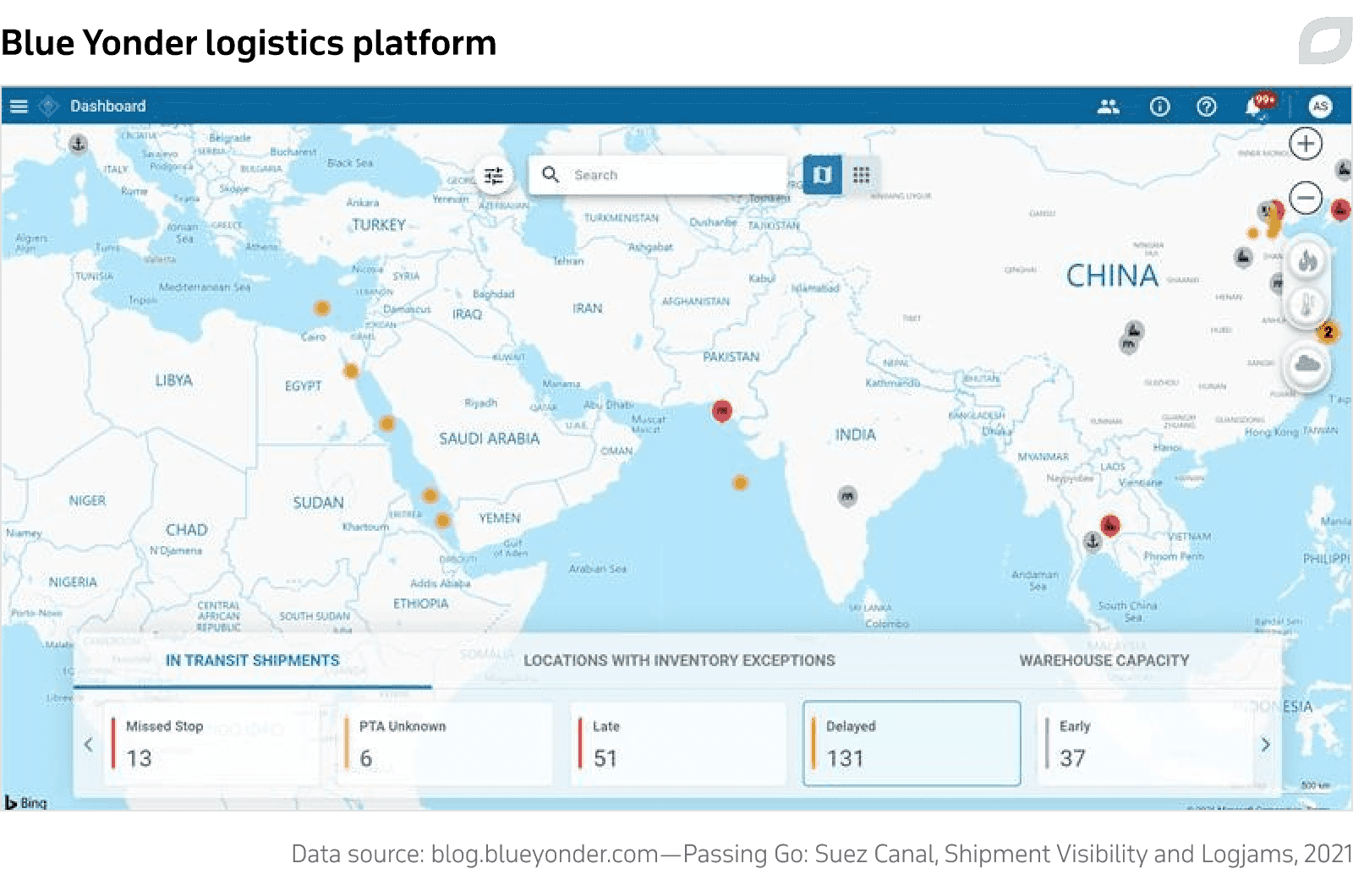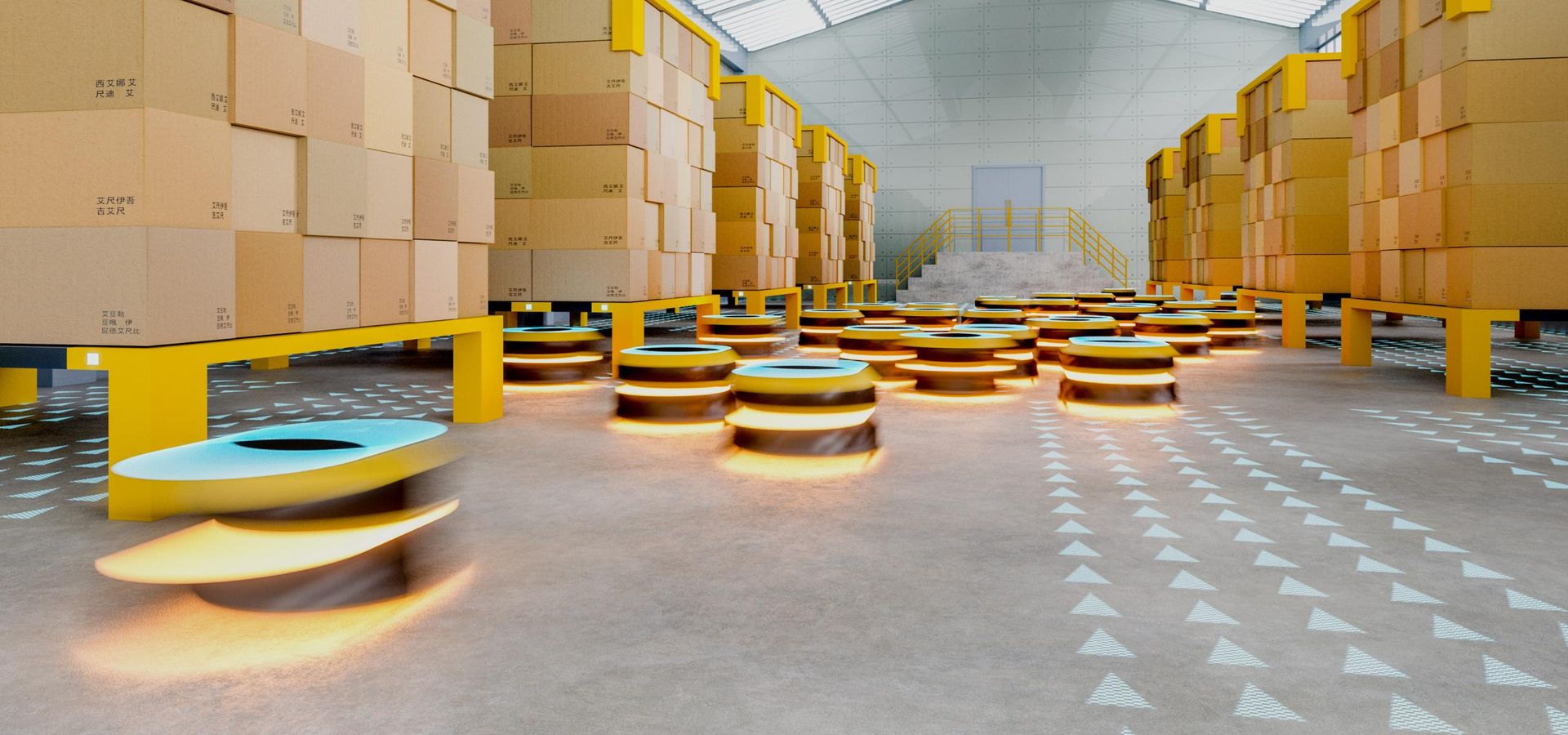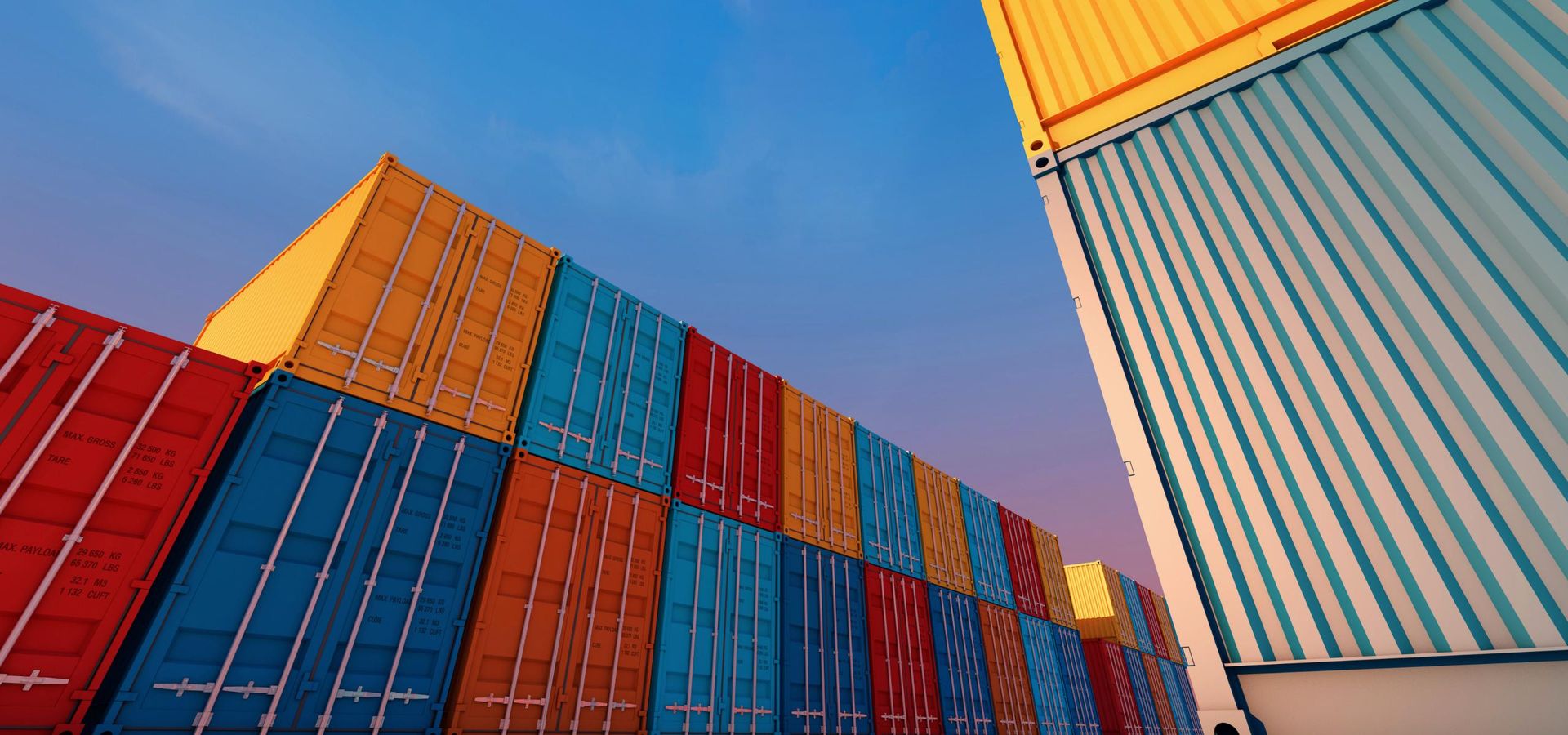For the longest time, the supply chain has been considered an essential but pretty straightforward part of a business. Supply chain managers’ jobs revolved around such basic tasks as ensuring that products are delivered to customers and a manufacturing facility has enough raw materials to maintain operations. But with the rapid advancements in logistics software development, supply chain management has transformed into an intricate process revolving around predicting demands, establishing lucrative partnerships, and maximizing operational effectiveness.
This smart supply chain became a significant trend due to several factors. First, the increasing accessibility of modern technologies highlighted the obsolescence of some supply chain practices. Second, customer expectations have grown rapidly, effectively forcing companies to figure out how to manufacture products faster and streamline SKU management. Third, growing environmental concerns, increasingly stringent traffic regulations, and the implications of travel restrictions caused by the pandemic all call for new ways of managing supply chains.
In a nutshell, the current business environment compels companies to have more agile, digitalized, resource-efficient and resilient supply chains. In this article, we will figure out what a smart supply chain is, compare it with a conventional supply chain, and discuss its key components.
What is a smart supply chain?
A smart supply chain involves the use of many emerging technologies including big data, IoT, blockchain, and RPA to streamline operations. These technologies allow supply chain companies to cut costs, shorten delivery times, reduce negative environmental impact, and achieve unprecedented levels of automation.
Importantly, a truly ‘smart’ supply chain is a self-improving and resilient system that can operate in an unpredictable environment. A smart supply chain also involves seamless sharing of information, partial reliance on automation, and continuous optimization of workflows based on real-time data. To better understand what a smart supply chain is, let’s see how one operates in real life.
In March 2021, the Suez Canal, one of the most important shipping routes in the world, was blocked by the largest cargo vessel in the world, preventing hundreds of ships from reaching their destinations. Just within six days of blockage, approximately $40 billion was cumulatively lost in trade disruption.
Blue Yonder is an AI-driven logistics platform which helps businesses to monitor their supply chains and constantly optimize operations. The embedded AI system takes into account a company’s past sales history, global weather conditions, local socio-economic situation, and a myriad of other factors that can impact the supply chain.
By analyzing data from local media, weather conditions, and IoT sensors installed across shipment containers, Blue Yonder has managed to predict how exactly the delay caused by the Suez Canal blockage will impact the production, sales, and operations of the company’s customers. By accurately predicting when the shipments will arrive at their intended destinations, customers could estimate the impact of potential disruptions and take actions to mitigate it. In September 2021, Panasonic Corporation bought Blue Yonder for an astonishing $8.5 billion.

Tap into smart supply chains now
Conventional vs smart supply chains
A conventional supply chain involves a limited number of different parties that proactively communicate with each other and exchange assets. But since these supply chains took shape way before the internet and digital technologies, they are inherently static and linear.
Let’s look into the example of a simplified version of the bicycle supply chain. Raw materials are first supplied to original equipment manufacturers (OEMs), where they are turned into bicycle parts. Then these parts are shipped to bicycle manufacturing facilities, where they are assembled into bicycles. Afterward, bicycles are distributed to retailers and finally sold to consumers. Nowadays, this level of supply chain simplicity can be found only across small-scale, local businesses.
The majority of modern supply chain ecosystems involve a hundred times more participants. Large-scale supply chain networks have to deal with hundreds of OEMs and operate across different regulatory requirements, causing the number of network participants to grow exponentially and significantly complicating operational workflows. This is why the modern supply chain requires a different approach to communication and collaboration between all parties involved.
In a nutshell, conventional supply chain practices prove adequate for small businesses operating in a highly predictable environment. In our increasingly unstable times when customer demands are constantly evolving, the traditional approach to supply chain management has simply grown inadequate and therefore obsolete.
Smart supply chain building blocks
Now let’s discuss the essential components of a smart supply chain.
|
A digital backbone Switching to digitized workflows prepares the ground for the implementation of advanced technologies. |
IoT Allows for the collection of detailed information about shipment conditions and equipment state. |
Artificial intelligence Processes large volumes of data and helps to predict demand, streamline planning, and minimize disruptions. |
|
Blockchain Ensures supply chain transparency and traceability and allows for automated execution of contracts. |
Supply control tower Improves visibility across the supply chain, enables quick identification of problems, and optimizes supply chain management. |
A holistic transformation approach Helps the company realize the full potential of a smart supply chain transformation. |
A digital backbone
To realize the immense potential of advanced supply chain technologies like AI, IoT, and blockchain, it’s important to have your ecosystem digitized first. All the technologies that comprise a smart supply chain require real-time access to data, and even if a tiny part of your supply chain network is dependent on paper-based information sharing, the benefits of integrating smart supply chain technologies will likely be undermined.
Other than that, a cloud-based approach to data storage and exchange is also key to scaling your supply chain operations. A range of supply chain activities like, for example, reacting to sudden market changes or expanding into new sectors, can be managed much faster in the cloud.
IoT
In the supply chain context, IoT facilitates remote identification of equipment failures and provides decision-makers with granular data on devices’ state and their surrounding environment. For example, by installing IoT sensors on a freight vehicle, a company can assess if it needs immediate maintenance. On top of that, the same sensors can provide information about vehicle location, which is useful for determining alternative routes.
Similarly, IoT sensors set up across a cargo with environment-sensitive goods like drugs or food can notify managers when the temperature, humidity, or light intensity exceeds allowed thresholds. This way, companies can reduce waste and ensure product quality.
Maersk, a Danish industrial container transportation provider, had to monitor the condition of more than 300,000 refrigerated containers. With the help of IoT sensors and Microsoft Azure cloud computing, Maersk can adjust certain parameters on the fly to ensure that products are delivered to customers in perfect condition. For example, when it comes to fruit and vegetables, employees can adjust oxygen and dioxide levels in the containers to accelerate or decelerate fruits’ ripening.
Artificial intelligence
AI enables supply chain organizations to streamline planning and minimize disruptions caused by unpredictable events. Gartner predicts that half of supply chain organizations will invest in AI and advanced analytics capabilities by 2025.
In general, demand forecasting is probably one of the most important use cases for AI in the supply chain. Conventionally, resource planners have to assess many disparate data sources to make predictions about the demand. This method is naturally fraught with many bottlenecks, with the most serious ones being low level of accuracy and human-related mistakes. AI, in its turn, can automatically process data incoming from all network participants to a unified data repository and help make evidence-based resource planning decisions.
Yet AI can bring even more value when paired with IoT. AI and ML-based manufacturing software can automatically analyze data streaming from IoT sensors and suggest maintenance activities or route and inventory optimization decisions that can further be approved by human employees.
Blockchain
A smart supply chain is a perfect place for blockchain to shine. First, blockchain provides a supply chain network with an immutable ledger, which guarantees that data is reliable and will remain untampered with. This allows companies to be confident in their decisions and AI models output. In general, blockchain creates a much more reliable and transparent environment for both companies and end consumers.
For example, companies can track product origination using IoT sensors and record this data on the blockchain, providing distributors with reliable data on product conditions. This way companies can determine spoiled products quickly and accurately identify who is responsible for spoilage.
Second, with the help of programmable electronic protocols commonly referred to as smart contracts, companies can automate contract execution. The implementation of this technology allows for completing contracts faster, minimizes the risk of human error, and eliminates mediator costs. In essence, with smart contracts in place, blockchain becomes not only a robust record-keeping system but an automated transaction platform.
For example, relying on smart contracts, companies can automatically transfer funds between each other when certain contract conditions are met. Moreover, with AI or RPA added into the mix, smart contracts can also automatically adjust prices based on delivery times or other factors. This helps companies to streamline the reconciliation of accounts and shorten settlement periods.
A supply control tower
In general, one of the most common points of criticism of conventional supply chain ecosystems is the lack of integration and connectivity between the participants. The pandemic made the value of seamless information sharing very apparent. Streamlined access to information is another important element of a truly smart and resilient supply chain.
One way to make this happen is to employ a supply control tower, a term originally coined by Gartner. Instead of sharing data linearly, from party to party, supply chain network participants send all relevant data to a unified data repository, where the information can be accessed by relevant partners. Control towers allow companies to analyze operational data in real-time, allowing for proactive risk management, and more granular control over operations overall. The aforementioned Blue Yonder case is one example of a supply control tower in action.
A holistic transformation approach
As a rule, the best approach to digital transformation initiatives is a step-by-step one, which implies gradual implementation of emerging technologies and aiming for quick results. But when it comes to supply chain operations, for it to become truly smart and autonomous, a company should use a holistic approach to integrating technologies, since AI, blockchain, and IoT are so interconnected and complement each other in many different ways.
IoT sensors embedded in various types of transport and freights allow companies to gather important data. AI and/or RPA, in their turn, allow companies to process data coming from hundreds of ecosystem partners and IoT sensors to make evidence-based decisions daily. Blockchain enables organizations to ensure that the data remains secure and accurate at all times, while smart contracts allow companies to increase operational efficiency by automating essential supply chain processes like invoice payment or insurance management.
Implementing all essential technologies can bring the supply chain one step closer to becoming self-sufficient, efficient, and increasingly automated while omitting even one tool can take the smart supply chain two steps back in terms of efficiency.
Augment your supply chain with innovative technologies
Conclusion
The importance of a smart supply chain in today’s high-paced business landscape cannot be underestimated. In the last few years, various economic disruptions have played havoc with many businesses. However, those with mature and increasingly digitized ecosystems have been able not only to overcome the challenges but thrive on them.
In general, there are two main ingredients to make a supply chain smart: emerging technologies and collaboration between supply chain network participants.




